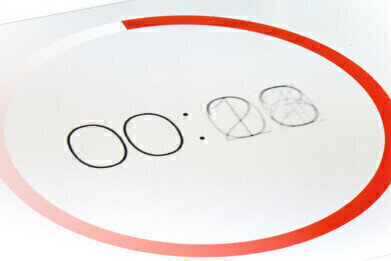HPLC, UHPLC
How Much Retention Time Variation Should I Expect?
Sep 29 2014
Retention time (RT) is the time that an analyte spends on a chromatography column between injection and detection. The time can depend on many factors, and these have to be controlled to give a consistent retention time. A compound’s retention time can be used to identify the compound in both qualitative and quantitative analysis. Consequently, the ability of the system to connect a compound to a retention time is important.
Problems due to RT Variation
There are several problems that can be caused by RT variation:
- If the sample contains many peaks, it can be difficult to match the compounds to peaks, especially if peaks are close together.
- If RTs are slightly longer than usual, a peak might not be detected before the end of the run.
- If a peak is outside an expected range, it might be associated with a different peak group, leading to an incorrect assay.
What is Acceptable Variation?
There will always be small variations in RT and deciding what an acceptable variation is should have been considered during the method development.
Part of the development process should consider the robustness of a method — in fact it is a regulatory requirement in many industries including pharma. During the method development phase the factors that are likely to lead to RT variation should be considered, with limits on the variation set. Testing various factors that affect RT during a method’s development are discussed in the article: Correlation of Analyte Retention in Organic and Inorganic Mobile Phases to aid Liquid Chromatography Method Development.
If limits on variation have not been set, there are several rules of thumb that can be used. Two examples are:
- Use a fixed time for each RT variation, for example ± 0.02 minutes.
- Use a percentage difference allowance, for example ± 10% of the time in the method.
If there are any doubts about a RT, a reference sample could be run to confirm that the chromatography and instrument parameters are correct.
Relative Retention Time
One method to help reduce the uncertainty due to RT variation is to use relative retention time (RRT). With RRT, an internal standard (IS) is added to the sample and the retention time of each analyte is compared with the IS retention time.
The use of RRTs is used in regulatory guidance issued by the European Commission concerning the interpretation of results of analytical methods for residues in animals. The guidance states that:
The ratio of the chromatographic retention time of the analyte to that of the internal standard, i.e. the relative retention time of the analyte, shall correspond to that of the calibration solution at a tolerance of ± 0,5 % for GC and ± 2,5 % for LC.
Image Source: Timer via Jonas Tana
Digital Edition
Chromatography Today - Buyers' Guide 2022
October 2023
In This Edition Modern & Practical Applications - Accelerating ADC Development with Mass Spectrometry - Implementing High-Resolution Ion Mobility into Peptide Mapping Workflows Chromatogr...
View all digital editions
Events
Apr 28 2024 Montreal, Quebec, Canada
May 05 2024 Seville, Spain
May 15 2024 Birmingham, UK
May 19 2024 Brno, Czech Republic
May 21 2024 Lagos, Nigeria














